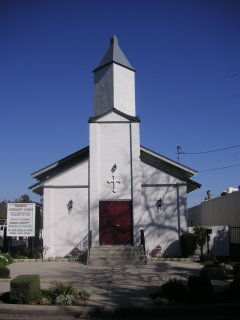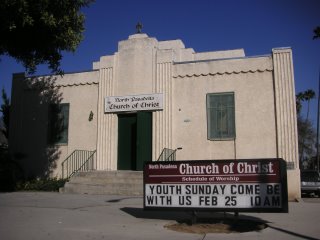 nd.
nd.This is the old building that housed St. Gregory in Pasadena. It's on Michigan Ave off of Walnut, just south of the 210. When I first pulled up by it I was amazed at how small it is. St. Gregory moved to its current location in 1964 due to size issues, the Armenian community was growing.
This church is now converted to what seems like a community protestant church. It's in fairly good shape for its age. It has a small parking lot on the left and an alley on the right. A pleasant little church, but the street it lies on is extremely narrow, a parallel parking nightmare on sundays.

This is the old location of the Cilicia Congregational Church. It was erected in 1936 and was actually the second location of the congregation (the old place is long gone and was used in the 20s).
This church has since been converted to an African American Church of Christ, it has very little remnants of an Armenan church.
 This is the new church for St. Gregory. This location was used since 1964, but for 5 years now they have been rebuilding it. It was a great sight to see as I was driving on Colorado, it towers over the block and makes our presence known. It isn't done yet though, the committee says it will be done by June, but I and a lot of other seriously doubt it. It should be done the fall hopefully, and if not then next year Pasadena will have its grandest church to date.
This is the new church for St. Gregory. This location was used since 1964, but for 5 years now they have been rebuilding it. It was a great sight to see as I was driving on Colorado, it towers over the block and makes our presence known. It isn't done yet though, the committee says it will be done by June, but I and a lot of other seriously doubt it. It should be done the fall hopefully, and if not then next year Pasadena will have its grandest church to date.In studying the Armenian community in Pasadena, this church is one of the best things to happen to this city. It's relocations and reconstructions are testaments to the growing influx of Armenians into Pasadena.